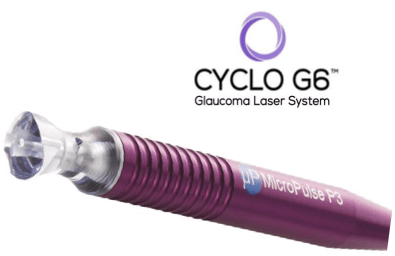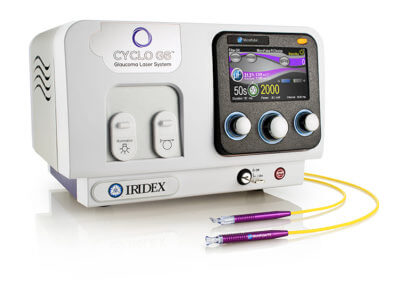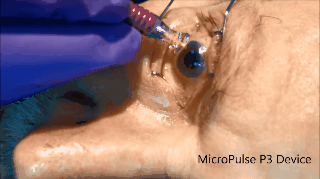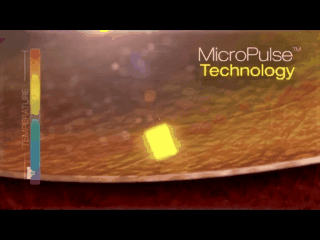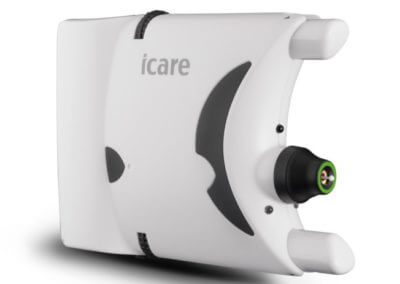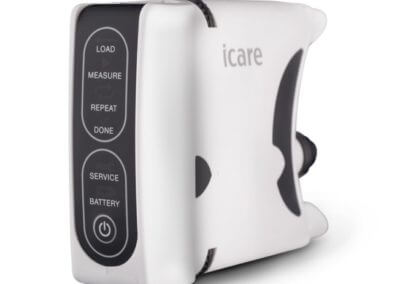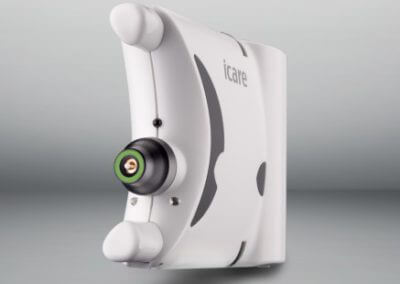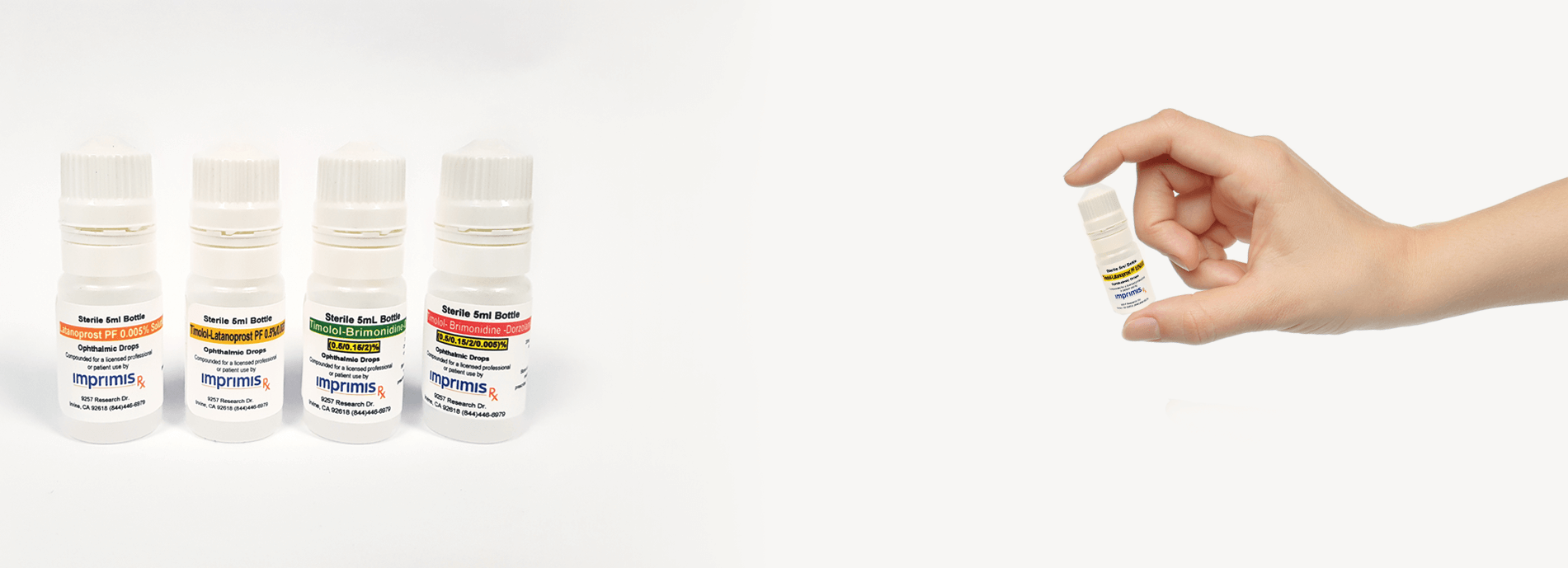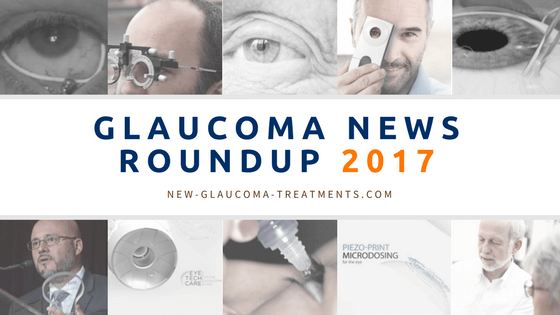
Top Glaucoma News and Researches of 2017
Here’s a roundup of news, discoveries and research updates about glaucoma in 2017. Subscribe to our Newsletter (found on the right sidebar) or Follow us on Facebook to continue getting updates.
Latest news on Glaucoma Medication | Year 2017
- Aerie Pharmaceuticals announces FDA approval of Rhopressa
- Effect of Type and Daily Dosage of Statin on Risk of Open-Angle Glaucoma
- High-precision Microdosing Device might be available in the US by 2020
- Imprimis Pharmaceuticals Introduces its Simple Drops™ Combination Glaucoma Drops
- New drug to treat glaucoma to hit market soon
- Recall of Two Glaucoma Medications Announced
- Roclatan meets primary efficacy endpoint in phase 3 study
- Sustained Drug Delivery for Glaucoma Treatment
- VYZULTA™: A New FDA Approved Glaucoma Medication with Dual Action
Latest News on Glaucoma Surgery| Year 2017
- ABiC viable option for different stages severities of glaucoma
- Ab-Interno Canaloplasty: Two-Year Results
- BELKIN Laser is developing a one-second glaucoma laser treatment
- Canaloplasty after failed trabeculectomy: a possible option
- Combined phacocanaloplasty for open-angle glaucoma and cataract: 12 months results
- EyeOP1® ULTRASOUND Cyclo-Plasty (UCP) Glaucoma Treatment
- Hydrus™ Microstent 2-Year Results
- Inflammation After Endoscopic Cyclophotocoagulation (ECP) Glaucoma Surgery
- Introducing Canaloplasty with the Stegmann Canal Expander®
- MicroPulse® P3 “Cyclophotocoagulation” – A Burst of Good News for those with Glaucoma
- The Journal Record’s Innovator of the Year: Khaimi wins top award for glaucoma surgery advances
Latest news on Glaucoma Devices | Year 2017
- EYEMATE Intraocular Pressure Sensor Implant Receives CE mark
- FDA Cleared Icare® HOME, An Innovative Device Poised To Revolutionize IOP Self-Monitoring
- Glaucoma Visual Field Progression-IOP-Tonometers
- High-precision Microdosing Device might be available in the US by 2020
- Sustained Drug Delivery for Glaucoma Treatment
- Vision quest: Tulane researchers use virtual reality to fight glaucoma
Latest news on Complementary and Alternative Treatments for Glaucoma | Year 2017
Latest news on Stem Cell and Gene Therapy for Glaucoma | Year 2017
- FDA approves gene therapy for rare form of blindness
- Gene Therapy for Glaucoma – Update from AGS 2017
- Potential predictor of glaucoma damage identified
- Under Pressure: Protecting Neurons From Glaucoma
- Stem cell secretions may protect against glaucoma
- Stem Cell Treatments for Eye Disease Include Risk of Blindness
- Update on the Stem Cell Treatment of Glaucoma – Encouraging the Growth of Trabecular Meshwork Cells
Latest News on Glaucoma Surgery| Year 2017
- 24 Hour IOP Measurements May Be Predictive of Visual Field Worsening in Patients with Glaucoma
- Central Visual Field Loss Associated with More Rapid Vision Loss in Glaucoma
- Electroceuticals to treat glaucoma
- OAG exhibits significantly higher rate of stroke development
- Ocular surface disease in patients under topical treatment for glaucoma
- Potential predictor of glaucoma damage identified
- Scientists discover potential treatment to stop glaucoma in its tracks
- Ubiquitous steroid use posing unwitting cause for glaucoma
- Vision quest: Tulane researchers use virtual reality to fight glaucoma
- The Journal Record’s Innovator of the Year: Khaimi wins top award for glaucoma surgery advances
JANUARY
Canaloplasty after failed trabeculectomy: a possible option
Patients with primary open-angle glaucoma who have a disrupted Schlemm’s canal wall due to prior glaucoma surgery may benefit from a modified non-filtering canaloplasty technique. Read more →
Under Pressure: Protecting Neurons From Glaucoma
Pete Williams, Ph.D., is researching how to protect the optic nerve from changes in intraocular pressure caused by glaucoma. He’s identifying the genes that show changes in expression in the glaucoma-affected mice compared to their unaffected counterparts. Next, Dr. Williams will test which ones affect the symptoms. By disrupting those genes that are early contributors to the disease, Dr. Williams intends to prevent nerve degeneration. Read more →
FEBRUARY
Marijuana-Derived Eye Drop?!
Nemus Bioscience may soon begin clinical testing of a marijuana-derived eye drop for the treatment of glaucoma. Read more →
Stem cell secretions may protect against glaucoma
Stem cell treatment for glaucoma is both controversial and complicated. There may, however, be a simpler solution around the corner. Researchers have discovered that “exosomes” derived from stem cells protect damaged rat optic nerves. Exosomes are packages of lipids (fats), proteins, and small strands of RNA. They are produced by stem cells and may act a “messengers” between cells. In theory, exosome treatment of glaucoma would require injecting these microscopic “packages” into the eye on a regular basis. Still, that’s much simpler than working with whole cells (and potentially less controversial as well). Read more →
MicroPulse® P3 “Cyclophotocoagulation” – A Burst of Good News for those with Glaucoma
A new type of minimally invasive glaucoma surgery (MIGS) that has quietly joined the fray in the battle against glaucoma: MicroPulse® P3 “Cyclophotocoagulation”. Traditional methods of cyclophotocoagulationburn the ciliary body. MicroPulse® P3 “Cyclophotocoagulation”, however, uses a slow application of laser energy that is “chopped” into micropulses (or, bursts). Each pulse heats up, but does not burn or destroy eye tissue. In between each pulse is a pause. This pause allows the eye tissue to cool off. In this manner the eye tissue is changed rather than destroyed.Read more →
Photos: www.iridex.com
Vitamin B-3 successfully prevents glaucoma in mice
Study suggests that treatments with vitamin B-3 – also known as niacin, or nicotinamide – improves the metabolism of aging retinal ganglion cells, keeping them healthy.” Read more →
Effect of Type and Daily Dosage of Statin on Risk of Open-Angle Glaucoma
Cholesterol lowering statin drugs may protect against developing glaucoma. “As statin use is increasing, there is growing evidence that it can reduce cholesterol levels and may also be protective against development of open-angle glaucoma. This large retrospective study analyzed over 25,000 cases…” Read more →
MARCH
24 Hour IOP Measurements May Be Predictive of Visual Field Worsening in Patients with Glaucoma
Dr. Gustavo De Moraes and his team of researchers presented a paper, which showed that a single 24 hour measurement with the SENSIMED Triggerfish® contact lens could predict the risk of worsening visual field loss over the next 5 years! Read more →
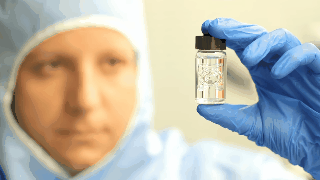
Modified animation via sensimed.ch
Introducing Canaloplasty with the Stegmann Canal Expander®
The inventor of canaloplasty, Dr. Robert Stegmann, invented yet another device that could further expand the canal and make canaloplasty even more effective at lowering the IOP in patients with glaucoma. It is a tube-shaped scaffolding device, about twice the thickness of a human hair. It is placed into Schlemm’s canal after canaloplasty has been performed. Once inserted, the Stegmann Canal Expander® keeps up to half of the canal open – permanently. Read more →
What Does Cellophane Have to Do with Glaucoma?
Cellophane maculopathy or Epiretinal Membrane—which closely resembles SaranTM Wrap—is known to be associated with growth of a particular type of cell called glial cells. These cells respond to inflammation. Recent evidence suggests that glial cells may also be activated in those with glaucoma. In a study conducted by Dr. Luna Xu and colleagues, eyes which required surgery to treat cellophane maculopathy had evidence of worse glaucoma than the fellow eyes without the epiretinal membrane. Read more →
Vision quest: Tulane researchers use virtual reality to fight glaucoma
Virtual Reality Headset could someday replace hated Visual Field testing. A team of Tulane University researchers plan to take the Oculus Rift purpose beyond gaming by using the console to diagnose glaucoma. Read more →
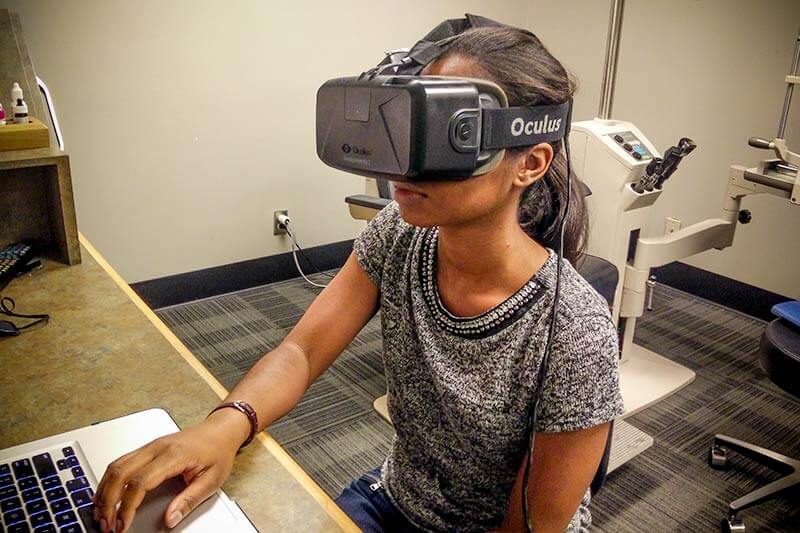
School of Medicine student Isabelle Dortonne sports the Oculus Rift virtual reality device that Tulane researchers are developing as a tool to test for glaucoma. Tulane alumni Nathan Hawkey, Benjamin Slavin and Elaine Chang formerly worked on the project. (Photo by Lauren Lim via news.tulane.edu)
FDA Cleared Icare® HOME, An Innovative Device Poised To Revolutionize IOP Self-Monitoring
The Icare® HOME tonometer for IOP Self-Monitoring has been cleared by the FDA and is now available for use in the United States. Read more →
Photos of Icare® HOME Tonometer via icare-usa.com
APRIL
BELKIN Laser is developing a one-second glaucoma laser treatment
Exciting stuff! Dr. Michael Belkin (who is one of the authors of the transscleral SLT study) is developing an SLT device that could be used to perform transscleral SLT in seconds without the need for a contact lens. Read more →
Inflammation After Endoscopic Cyclophotocoagulation (ECP) Glaucoma Surgery
Endoscopic Cyclophotocoagulation (ECP) is generally thought of as a relatively low risk glaucoma treatment. One potential risk, however, is uveitis (inflammation) of the eye. This inflammation has been reported to occasionally be quite severe after ECP. Read more →
Update on the Stem Cell Treatment of Glaucoma – Encouraging the Growth of Trabecular Meshwork Cells
Dr. Markus Kuehn and colleagues are currently working on induced pluripotent stem cells (iPSC-TM). In mice transplanted with iPSC-TM the aqueous humor outflow facility (drainage of fluid out of the eye) improved within two months of surgery. This was associated with increased cellular density of the trabecular meshwork, IOP control, and protection of the retinal ganglion cells (usually damaged by elevated IOP). Read more →
MAY
Central Visual Field Loss Associated with More Rapid Vision Loss in Glaucoma
There is now evidence that early central loss of vision can predict how quickly your glaucoma will worsen. While it’s inconvenient to sit through two separate visual fields—for those eyes with early central vision loss, more frequent visual field testing should be performed. Ideally, both 24-2 and 10-2 fields would be repeated 2-4 times per year.—the added information will help your glaucoma surgeon best protect you from losing vision Read more →
Potential predictor of glaucoma damage identified
Research in mice and patients suggests biomarker could predict vision loss.”A biomarker that appears linked to damage to cells in the retina of the eye has been identified by researchers. The marker may make it possible to better monitor the progression of glaucoma, as well as the effectiveness of treatment for the blinding disease.” Read more →
Glaucoma Visual Field Progression-IOP-Tonometers
For those with glaucoma, higher intraocular pressure (IOP) is associated with faster vision loss. There are now multiple different types of tonometry used to check IOP. It’s reasonable, then, to ask, “Is any one of these methods of checking IOP better at monitoring glaucoma?” Read more →
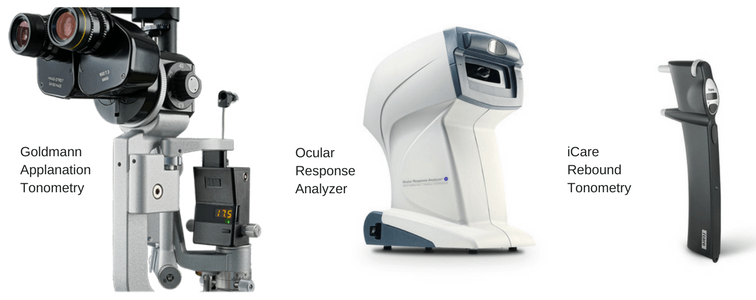
Photos: Goldmann Applanation Tonometry: www.haag-streit.com | Ocular Response Analyzer: www.reichert.com | Icare Rebound Tonometry: /www.icaretonometer.com
JUNE
Imprimis Pharmaceuticals Introduces its Simple Drops™ Combination Glaucoma Drops
Finally! You may now simplify your glaucoma drop treatment regimen. No more juggling multiple bottles! Innovative Simple Drops™ combine multiple medications into single drop bottles for glaucoma patient’s convenience. Read more →
Photos of Simple Drops via www.imprimisrx.com
EYEMATE Intraocular Pressure Sensor Implant Receives CE mark
There’s a new IOP measuring system that has received CE mark approval for use with glaucoma patients within EU. The system enables patients to do their own IOP measurement anywhere and anytime. Read more →
Sustained Drug Delivery for Glaucoma Treatment
Soon, a way out of the hassle of a glaucoma drop regimen. These implants would contain glaucoma medication that would be slowly released over many months (known as “Sustained Drug Delivery”). It is quite likely that one or more of these implants will be FDA approved over the next few years for the treatment of glaucoma. Read more →
Electroceuticals to treat glaucoma
BioNode has developed a technology that uses a non-invasive special eyeglass + contact lenses that deliver currents to the part of the eye that help drain fluid build-up. Early tests in mice showed promise and they are now putting a clinical trial of 100 patients to verify the prototype’s efficacy and durability profile.
JULY
New drug to treat glaucoma to hit market soon
DE-117, a new glaucoma therapy being developed by Santen Pharmaceutical, recently won the approval of its Phase 3 clinical trial plan. This drug is further being studied if it can replace or will work better than Xalatan (compound Latanoprost). It’s now on Phase 3 Clinical Trial. Read more →
Ocular surface disease in patients under topical treatment for glaucoma
Higher prevalence of Ocular Surface Disease seen on patients taking IOP-lowering drops with preservatives than those not taking them. Read more →
AUGUST
Roclatan meets primary efficacy endpoint in phase 3 study
Roclatan, a once-daily fixed-dose combination drug for lowering IOP achieved positive efficacy results in a a 718-patient Phase 3 clinicial trial.
Roclatan—a combination of Rhopressa (netarsudil ophthalmic solution) and prostaglandin analogue (PGA) latanoprost is poised to become the most potent IOP-lowering therapy to enter the market, if it gets FDA approval. Read more →
SEPTEMBER
Ubiquitous steroid use posing unwitting cause for glaucoma
Use of steroids by any route may lead to increased IOP and significant visual loss for those with glaucoma. Read more →
OCTOBER
OAG exhibits significantly higher rate of stroke development
Patients diagnosed with open-angle glaucoma are more likely to experience a stroke and males are at greater risks than females, according to a retrospective study in the British Journal of Ophthalmology. Read more →
NOVEMBER
The Journal Record’s Innovator of the Year: Khaimi wins top award for glaucoma surgery advances
Ab-interno canaloplasty developer wins top award for glaucoma surgery advances. Dr. Richardson wrote about Dr. Mahmoud A. Khaimi’s work here: http://bit.ly/2z6Wc7s. Read more →
Recall of Two Glaucoma Medications Announced
Allergan has announced a voluntary recall of 7 lots of Combigan and 1 lot of Lumigan (bimatoprost) due to testing results not meeting the regulatory specifications for individual and total impurities. . Read more →
ABiC viable option for different stages severities of glaucoma
According to Dr. Mark J. Gallardo, one of the most interesting forms of minimally invasive glaucoma surgeries (MIGS) is ab-interno canaloplasty (ABiC). An evolution of traditional canaloplasty, ABiC’s ability to restore the eye’s natural outflow pathway—with or without cataract surgery—makes it a viable option for the treatment of different stages and severities of glaucoma. Read more to find out the impressive result of his 12 month case series study. Read more →
VYZULTA™: A New FDA Approved Glaucoma Medication with Dual Action
On November 2, 2017, the FDA approved VYZULTA™ (latanoprostene bunod 0.024%) for the treatment of glaucoma. The prostaglandin analog class of glaucoma medications has only one method of action: improving uveoscleral outflow. VYZULTA™, on the other hand, appears to use all outflow pathways acting as a prostaglandin analog “plus”. Read more →
EyeOP1® ULTRASOUND Cyclo-Plasty (UCP) Glaucoma Treatment
Will US FDA follow France’s and China’s lead in approving the EyeOP1® UCP as a glaucoma treatment? In late October it was announced that the Chinese FDA had approved a new non-invasive glaucoma treatment called EyeOP1® Ultrasound Cyclo-Plasty (also known as Ultrasound Ciliary-Plasty, or UCP). Using ultrasound to treat glaucoma, is new… Read more →
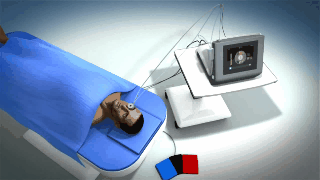
Modified animation via eyetechcare.com
Scientists discover potential treatment to stop glaucoma in its tracks
“Vision scientists at UC Berkeley and the University of Toronto have discovered that naturally occurring molecules known as lipid mediators have the potential to halt the progression of glaucoma…” Read more →
Hydrus™ Microstent 2-Year Results
There might soon be another MIGS available in the USA. The results of the HORIZON study suggest that the Hydrus™ Microstent may be the most effective MIGS implant to date. Currently, the only FDA approved MIGS implants are the iStent and CyPass. Based on the results of the HORIZON study, that may soon change. If so, not only will patients with mild to moderate glaucoma have more options, they might have a more effective option as well. Read more →
Stem Cell Treatments for Eye Disease Include Risk of Blindness
“Although I am very excited about the future role of stem cell treatment of eye diseases, there are currently no proven stem cell treatments for glaucoma. Anyone considering stem cell treatment should read this cautionary article as it has some advice on how to protect yourself from unnecessary risk”. Read more →
DECEMBER
High-precision Microdosing Device might be available in the US by 2020
All conventional front-of-the-eye therapies are administered using 100-year-old legacy eye-dropper pipette technology. Eyenovia attempts to provide a better, safer, and more targetted drug delivery mechanism alternative to this with its breakthrough piezo-print technology for high-precision micro-dosing. The product is now on clinical stage. Read more →
Video via eyenoviabio.com
Drinking Hot Tea May Protect Against Glaucoma
Researchers found a strong link between people drinking hot tea daily and lower odds of developing glaucoma. Among those who consumed at least one cup of hot tea per day, the odds of having glaucoma were 74 percent lower than those of non-tea drinkers. Read more →
Gene Therapy for Glaucoma – Update from AGS 2017
Dr. Paul L. Kaufman gave an interesting “Overview of Gene-Based Therapies for Glaucoma” at the recent American Glaucoma Society (AGS) 2017 Annual Meeting. His presentation covered strategies, methods, outcomes, and obstacles related to this glaucoma treatment approach. However, as Dr. Kaufman made clear, there are still a number of hurdles that will need to be cleared before such treatments will be available for human use. Read more →
Ab-Interno Canaloplasty: Two-Year Results
Does the IOP-lowering effect of Ab-Interno Canaloplasty last? That is the question posed by a study recently presented by Dr. Norbert Koerber at the 2017 World Glaucoma Congress. Although small in size (only 25 patients), it was long in duration (up to 24 months of post-surgical follow-up.
- average IOP dropped from 19.5mmHg to 15.7mmHg (a two point drop in IOP)
- average the number of medications required to achieve IOP control dropped from 1.7 prior to ABiC to 0.4 24 months out from surgery. Sixty four (64%) of the patients who participated in this study were glaucoma medication free after surgery. Read more →
Aerie Pharmaceuticals announces FDA approval of Rhopressa
Dr. David Richardson wrote an article last July 2014 on a new class of potential glaucoma medications termed the “ROCK and ROCK/NET inhibitors”, which includes Rhopressa—a combination ROCK/NET inhibitor. Click this link if you want to learn more. Read more →
Combined phacocanaloplasty for open-angle glaucoma and cataract: 12 months results
Canaloplasty combined with clear corneal phacoemulsification for open-angle glaucoma and cataract: 12 months results
- Intraocular pressure went down by 37%
- Glaucoma medication dropped from average 1.55 to 0.35. Sixty percent (60%) of the patients who participated in this study were glaucoma medication free after surgery! Read more →
FDA approves gene therapy for rare form of blindness
FDA Approves First-Of-Its-Kind Gene Therapy To Treat Blindness, Price Unclear But May Cost $1 Million. The injection, called Luxturna, is the first gene therapy approved by the Food and Drug Administration in which a corrective gene is given directly to patients. Read more →
Don’t delay getting checked for glaucoma.
Make an appointment with an eye doctor in your area now. If you live in the greater Los Angeles area and would like Dr. Richardson to evaluate your eyes for glaucoma call 626-289-7856 now. No referral required. Appointments are available, Tuesday through Saturday.

David Richardson, MD
Medical Director, San Marino Eye
David Richardson, M.D. is recognized as one of the top cataract and glaucoma surgeons in the US and is among an elite group of glaucoma surgeons in the country performing the highly specialized canaloplasty procedure. Morever, Dr. Richardson is one of only a few surgeons in the greater Los Angeles area that performs MicroPulse P3™ "Cyclophotocoagulation" (MP3) glaucoma laser surgery. Dr. Richardson graduated Magna Cum Laude from the University of Southern California and earned his Medical Degree from Harvard Medical School. He completed his ophthalmology residency at the LAC+USC Medical Center/ Doheny Eye Institute. Dr. Richardson is also an Ambassador of Glaucoma Research Foundation.

